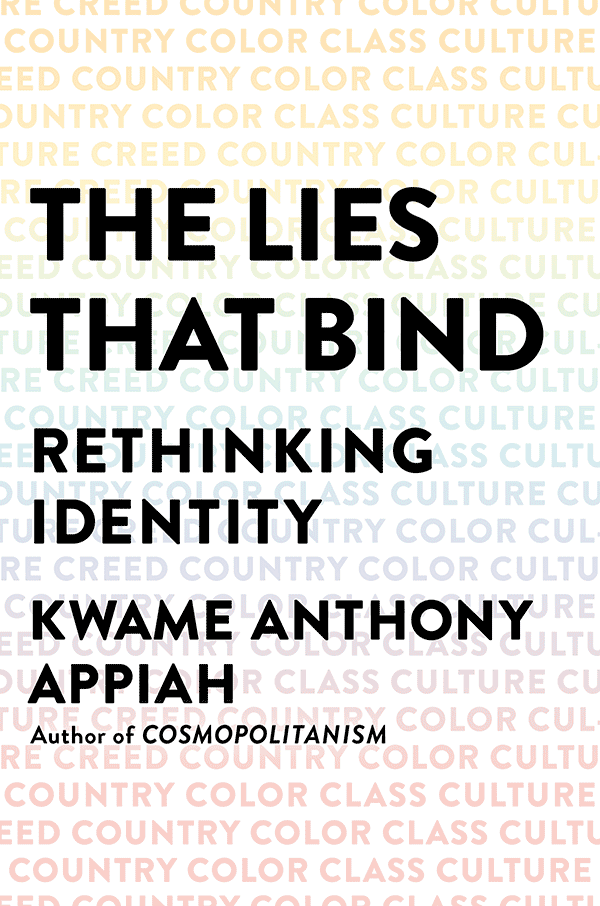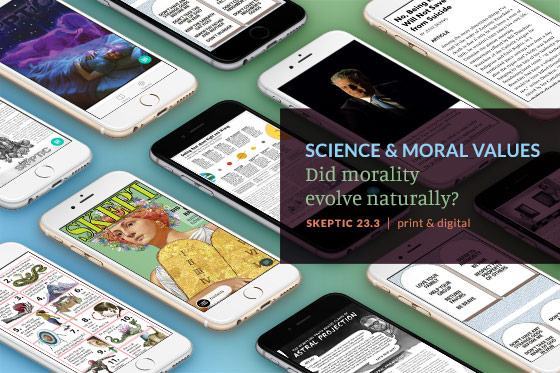SCIENCE SALON # 40
Dr. Kwame Anthony Appiah — Who Am I? Who Are You? The Lies That Bind: Rethinking Identity
In this wide-ranging conversation Dr. Appiah and Dr. Shermer review the 5 “Cs” of identity—Creed, Country, Color, Class, and Culture—and what they tell us about who we are, or at least who we think we are. Dr. Appiah’s new book The Lies That Bind: Rethinking Identity explores the nature and history of the identities that define us. It challenges our assumptions about how identities work. We all know there are conflicts between identities, but Appiah shows how identities are created by conflict. Religion, he demonstrates, gains power because it isn’t primarily about belief. Our everyday notions of race are the detritus of discarded nineteenth-century science. Our cherished concept of the sovereign nation—of self-rule—is incoherent and unstable. Class systems can become entrenched by efforts to reform them. Even the very idea of Western culture is a shimmering mirage. These “mistaken identities,” Appiah explains, can fuel some of our worst atrocities—from chattel slavery to genocide. And yet, he argues that social identities aren’t something we can simply do away with. They can usher in moral progress and bring significance to our lives by connecting the small scale of our daily existence with larger movements, causes, and concerns. Elaborating a bold and clarifying new theory of identity, The Lies That Bind is a ringing philosophical statement for the anxious, conflict-ridden twenty-first century. This book will transform the way we think about who—and what—“we” are.
Kwame Anthony Appiah is a professor at NYU in the department of philosophy and the school of law, the Ethicist column for the New York Times, and the author of Cosmopolitanism: Ethics in a World of Strangers, The Honor Code: How Moral Revolutions Happen, Experiments in Ethics, and most recently The Lies That Bind: Rethinking Identity.
Listen to the podcast via Apple Podcasts, Spotify, Google Podcasts, Stitcher, iHeartRadio, and TuneIn.
This remote Science Salon was recorded on August 21, 2018.
Check Us Out On YouTube.
Science Salons • Michael Shermer
Skeptic Presents • All Videos
If you enjoy the Science Salon Podcast, please show your support by making a donation. Your ongoing patronage is vital to our mission to promote science and critical thinking.

MICHAEL SHERMER’S “SKEPTIC” COLUMN IN SCIENTIFIC AMERICAN
A Mysterious Change of Mind: Why Do People Die by Suicide?
Anthony Bourdain (age 61). Kate Spade (55). Robin Williams (63). Aaron Swartz (26). Junior Seau (43). Alexander McQueen (40). Hunter S. Thompson (67). Kurt Cobain (27). Sylvia Plath (30). Ernest Hemingway (61). Alan Turing (41). Virginia Woolf (59). Vincent van Gogh (37). By the time you finish reading this list of notable people who died by suicide, somewhere in the world another person will have done the same, about one every 40 seconds (around 800,000 a year), making suicide the 10th leading cause of death in the U.S. Why?
According to the prominent psychologist Jesse Bering of the University of Otago in New Zealand, in his authoritative book Suicidal: Why We Kill Ourselves (University of Chicago Press, 2018), “The specific issues leading any given person to become suicidal are as different, of course, as their DNA—involving chains of events that one expert calls ‘dizzying in their variety.’” Indeed, my short list above includes people with a diversity of ages, professions, personality and gender. Depression is commonly fingered in many suicide cases, yet most people suffering from depression do not kill themselves (only about 5 percent Bering says), and not all suicide victims were depressed. “Around 43 percent of the variability in suicidal behavior among the general population can be explained by genetics,” Bering reports, “while the remaining 57 percent is attributable to environmental factors.” Having a genetic predisposition for suicidality, coupled with a particular sequence of environmental assaults on one’s will to live, leads some people to try “to make the sh*t stop,” in the words of Winona Ryder’s character in the 1999 film Girl, Interrupted. […]
Follow Michael Shermer on
Twitter • Facebook • Blog • YouTube
MONSTERTALK EPISODE 171
Long and Drawn Out: Bigfoot Pictographs
An interview with archaeologist Ken Feder (see numerous other episodes including Giants and Atlantis) about the Tule River reservation Mayak Datat (“Hairy Man”) pictographs which have been called evidence for Bigfoot. Hopefully, this will be part 1 of at least a 2 part look.
Listen to MonsterTalk via iTunes, Spotify, Google Play Music, TuneIn, and Stitcher. Get the MonsterTalk Podcast App for iOS, Android, and Windows.













